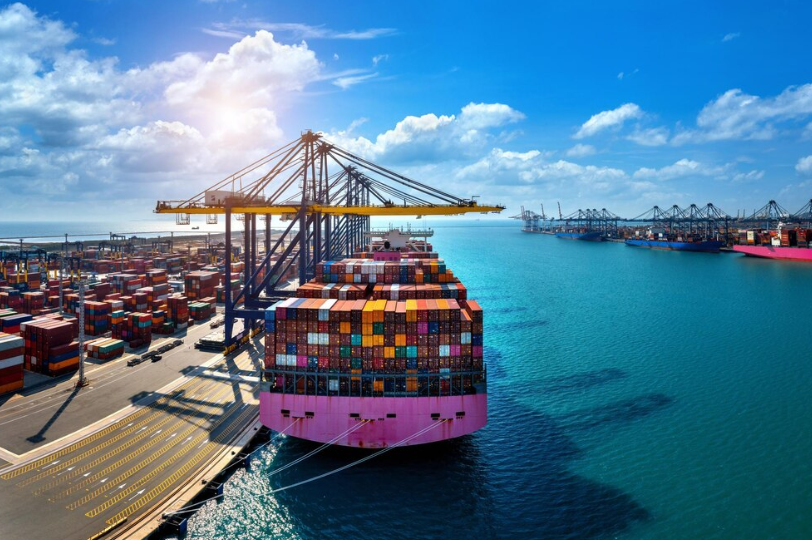For international buyers sourcing products from China—especially kitchenware, household goods, and daily-use items—one major logistical concern always arises: How do I get my goods to Moscow efficiently, cost-effectively, and reliably? Choosing between sea freight and railway transport can directly impact delivery time, shipping costs, customs clearance, and even customer satisfaction. In this blog, we’ll help you evaluate both methods, highlight their pros and cons, and guide you to make the best decision for your business.
Why Choosing the Right Delivery Method Matters
Many importers underestimate how much shipping mode affects the total landed cost and lead time. A great product sourced at the best price can quickly become uncompetitive if shipping is too expensive or too slow.
Key problems faced by sellers importing to Russia:
-
Delays in customs clearance and transit
-
High shipping costs that reduce profit margin
-
Lack of visibility in tracking
-
Product damage during long transit
-
Uncertainty in delivery time for seasonal promotions
Understanding your options helps you plan inventory, set accurate delivery expectations, and maximize profit.
Shipping from China to Moscow: Two Main Routes
China is Russia’s largest trading partner, and logistics networks between the two countries have expanded significantly in the past decade. When shipping to Moscow, businesses typically choose between two main routes:
| Route |
Average Time |
Cost |
Best For |
| Sea Freight |
35–50 days |
Lower |
Large volume & cost-sensitive |
| Railway Freight |
14–25 days |
Higher than sea |
Faster delivery & urgent orders |
Let’s take a deeper look at both.
Sea Freight to Moscow: Cost-Efficient, But Slower
Sea shipping from China to Russia usually goes through major seaports like Vladivostok, St. Petersburg, or Novorossiysk, and then the goods are moved inland by truck or train to Moscow.
Advantages:
-
Lower cost per CBM or ton, ideal for bulky goods
-
Economical for full container loads (FCL)
-
Reliable for non-urgent goods
-
More suited to stable, long-term inventory planning
Disadvantages:
-
Longer transit time (can be over 40 days)
-
Additional steps for inland transport to Moscow
-
Weather or port congestion can cause unpredictable delays
Suitable for:
-
Kitchen appliances, ceramic kitchenware, or any items with lower time sensitivity and higher shipping volume
-
Sellers with good warehouse planning
Railway Freight to Moscow: Fast and Increasingly Popular
The China-Europe Railway Express has become a popular middle-ground between air and sea. Goods are loaded into containers and transported via rail across Kazakhstan or Mongolia into Russia.
Advantages:
-
Faster transit time: 14–25 days to Moscow
-
Direct rail lines to Moscow or other major Russian hubs
-
Lower carbon footprint compared to air freight
-
Safer than sea freight for some fragile products
Disadvantages:
-
Higher costs than sea freight (especially for LCL)
-
Limited capacity during peak season
-
May have more complex customs procedures
Suitable for:
-
Time-sensitive orders, such as seasonal kitchen items or fast-selling goods
-
New product launches needing speed-to-market
-
Medium-size loads where air is too expensive, but sea is too slow
Cost Comparison Example (Based on 2025 Data)
Let's compare the typical cost for a 20-foot container from Yiwu or Ningbo (China) to Moscow:
| Shipping Method |
Transit Time |
Approximate Cost (USD) |
| Sea + Truck |
40–50 days |
$2,800 – $3,500 |
| Railway |
18–22 days |
$4,200 – $5,000 |
⚠️ Note: Prices fluctuate based on fuel surcharges, customs policies, and seasonality.
Choosing Based on Product Category
Different product types require different logistics strategies. Here's a breakdown of what works best for key product groups commonly sold online in Russia:
| Product Type |
Recommended Shipping Method |
Why? |
| Kitchen Tools & Gadgets |
Railway for small/light SKUs
Sea for bulk sets |
Kitchen tools are often small and fast-moving; use rail to restock quickly and sea for large orders. |
| Home Storage Products |
Sea Freight |
Bulky but not urgent; best shipped in containers. |
| Textiles & Clothing |
Railway |
Seasonal demand and SKUs change quickly, so faster delivery is essential. |
| Electronics |
Railway with Insurance |
High value and demand speed; rail balances cost and delivery time. |
| Plastic Household Goods |
Sea Freight |
Cheap and bulky; sea keeps margin healthy. |
| Tools & DIY Accessories |
Railway |
Medium-size, often needed urgently; rail is preferred. |
| Toys & Stationery |
Railway for trendy items
Sea for stable SKUs |
Fast restocking for trending items is critical. |
If your product falls into the “seasonal,” “lightweight,” or “fast-turnover” category, railway is likely your better option. For bulk orders, promotional stockpiling, or items with stable demand curves, sea freight provides the most savings.
Our Recommendation for Online Sellers Shipping to Moscow
For small to mid-sized online sellers shipping general consumer goods to Russia:
-
Use railway for new product launches, trendy SKUs, and restocking popular items quickly.
-
Use sea freight for promotional bulk orders, stable demand goods, or to build up Moscow warehouse inventory before peak season.
In many cases, a hybrid strategy works best—send the first few batches of a new product via railway, and switch to sea once sales volume stabilizes and planning becomes predictable.
As your trusted China sourcing partner, we handle the complexities of mixed logistics, customs clearance, and route optimization—tailored to your product type and volume. By leveraging strong partnerships with top shipping lines and rail operators, we guarantee safe, timely, and cost-efficient delivery to Moscow.
Need a quote or expert advice on the best shipping solution? Contact us now!
 Women Activewear
Women Activewear
 Men Activewear
Men Activewear
 Men Outdoor Apparel
Men Outdoor Apparel
 Women Outdoor Apparel
Women Outdoor Apparel
 Team Sports
Team Sports
 Sports Shaper & Sports Safety
Sports Shaper & Sports Safety
 Camping & Hiking
Camping & Hiking
 Boxing Fighting & Dance Gymnastics
Boxing Fighting & Dance Gymnastics
 Game Room & Backyard
Game Room & Backyard
 Swimming & Beach
Swimming & Beach
 Sports & Outdoor Accessories
Sports & Outdoor Accessories
 Cycling
Cycling
 Winter Sports
Winter Sports
 Racquet Sports
Racquet Sports
 Water Sports
Water Sports
 Hunting
Hunting
 Fitness
Fitness
 Fishing
Fishing












































